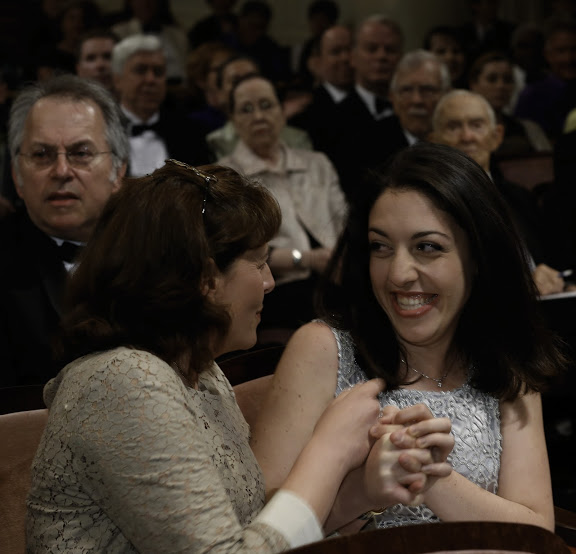Leoš Janáček: In the Mists
Janáček’s four-movement piano cycle from 1912 presents us with intimate, personal and emotionally immediate music that stands stylistically on the border between eastern and western Europe. Its sound world is that of the fiddles and cimbalom (hammered dulcimer) of Moravian folk music. Equally folk-like is its use of small melodic fragments, repeated and transformed in various ways. In the composer’s use of harmonic colour, however, there is more than a mist of French impressionism, à la Debussy, but an impressionism as heard through Czech ears.
The Andante sets the tone of introspection with its dreamlike repetitions of a tonally ambivalent 5-note melody, set against non-committal harmonies in the left-hand ostinato. A contrasting middle section brings in a less troubled chorale melody that alternates with, and then struggles against, a cascade of cimbalom-like runs, before the nostalgic return of its melancholy opening theme.
The varied repetition of a four-note motive dominates the many contrasting sections of the Adagio, as a noble but halting melody engages in conversation with rhythmically and melodically transformed versions of itself.
The Andantino is similarly fixated on a single idea, presenting the gracious opening phrase in a number of different keys until it is interrupted by an impetuous development of its accompaniment figure, and then ends exactly as it begins.
The fourth movement, Presto, with its many changes of meter, is reminiscent of the rhapsodic improvisational style of the gypsy violin. The cimbalom of Moravian folk music can be heard most clearly in the thrumming drones of the left-hand accompaniment and in the occasional washes of metallic tone colour in the right hand.
Franz Schubert: Four Impromptus, D. 935 (Op. 142)
Schubert wrote these four works, along with another group of four impromptus (D. 899/Op. 90) in 1827. Only two were published in the short period Schubert still had to live. The four that finally appeared as Op. 142 were published in 1838 by Diabelli, who entitled these pieces “Impromptus.”
The word “impromptu” belies the true construction of the works, for they are not improvisations at all, nor are they spur of the moment conceptions. Rather, the word is intended to evoke the idea that the music originated in a casual manner, and that it was born of poetic fantasy in the composer’s mind. Each of the impromptus explores a particular mood of tonal poetry, that mood being defined at the outset.
The somewhat elusive structure of the first impromptu combines elements of sonata and rondo. There is a wide range of moods, from the sombre melancholy of the opening to some highly excitable passages later on. Schubert’s characteristic fluctuations between major and minor tonalities are also much in evidence.
The second is designed as a simple Minuet and Trio. The music strongly recalls the mood, tempo, melodic outline and harmonic progressions of the opening of Beethoven’s Piano Sonata Op. 26 in the same key (A flat major).
The third impromptu is a theme with five variations. Schubert borrowed this wonderfully idyllic, ingratiating theme from his incidental music to the play Rosamunde, Fürstin von Zypern, where it introduces the scene of Rosamunde tending her flocks in Act IV. He also used a close variant of it in his String Quartet in A minor (D. 804).
The final impromptu, with its slightly ironic air, delights principally through rhythmic playfulness, a dancelike spirit and brilliant passage work. Towards the end, a note of veiled mystery creeps in, but this resolves into a furious rush to the finish, culminating in a swoop down to the lowest note (F) on Schubert’s piano.
Robert Schumann: Davidsbündlertänze, Op. 6
The Davidsbündlertänze (Dances of the League of David) dates from 1837, when the composer was 27. In its first edition, it was published with the title “Florestan and Eusebius,” referring to the two fictional characters, members of the “League of David”, who are actually only opposing facets of Schumann’s alter ego, the former representing his extroverted, exuberant side, the latter his quiet, meditative side. The “Davidsbund” itself, purely a product of Schumannn’s fertile romantic imagination but fashioned after the Old Testament figure, represented the proud, musical pioneers who went forth to do battle (with pens and notes, not swords and slingshots) against philistines and ultra-conservative composers of the day. All but number 16 bear an initial at the end, indicating whether it was inspired by Florestan, Eusebius or the two together.
The spirit of the dance infuses the entire eighteen-piece set in one way or another. Mazurka, waltz, polka, tarantella, Ländler, and other dance forms are either obviously or subtly transformed in these mood pieces, which are by turns joyous, eccentric, reflective, lively, agitated, and whimsical. The opening gesture, which is used as a sort of motto throughout, comes from a mazurka by Schumann’s fiancée, Clara Wieck.
The pianist-scholar Charles Rosen offers this insightful observation about the music: “The meaning of the Davidsbündlertänze cannot be put into words, of course, but it comes closer to words than any other piece of music that I know. With its combination of memory and nostalgia, humour and willfulness… the work seems to hint at something hidden within it, intended for us to guess at and not to find. It is, in any case, the reticent Eusebius that has the last word.”
Program notes by Donald Gislason & Robert Markow, 2013.




